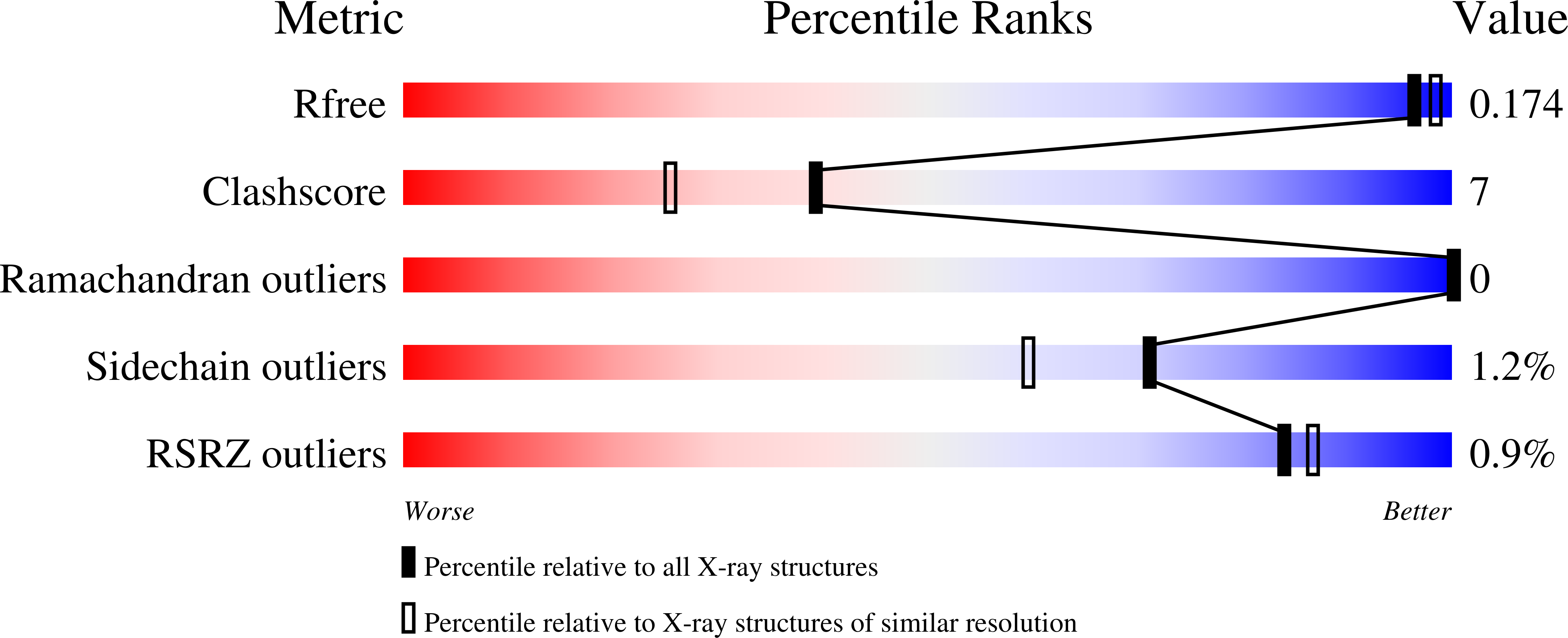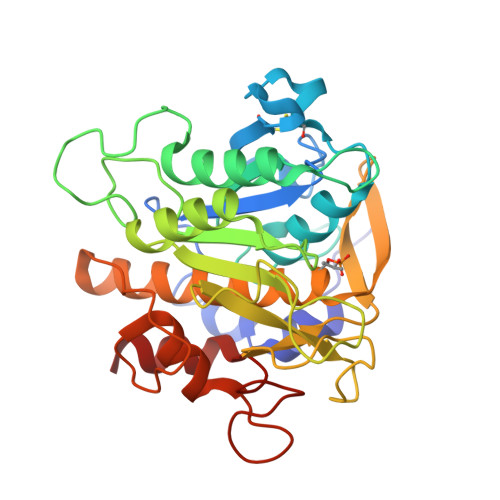Four new crystal structures of Tk-subtilisin in unautoprocessed, autoprocessed and mature forms: insight into structural changes during maturation
Tanaka, S., Matsumura, H., Koga, Y., Takano, K., Kanaya, S.(2007) J Mol Biology 372: 1055-1069
- PubMed: 17706669
- DOI: https://doi.org/10.1016/j.jmb.2007.07.027
- Primary Citation of Related Structures:
2Z2X, 2Z2Y, 2Z2Z, 2Z30 - PubMed Abstract:
Subtilisin from the hyperthermophilic archaeon Thermococcus kodakaraensis (Tk-subtilisin) is matured from Pro-Tk-subtilisin upon autoprocessing and degradation of the propeptide. The crystal structures of the autoprocessed and mature forms of Tk-subtilisin were determined at 1.89 A and 1.70 A resolution, respectively. Comparison of these structures with that of unautoprocessed Pro-Tk-subtilisin indicates that the structure of Tk-subtilisin is not seriously changed during maturation. However, one unique Ca(2+)-binding site (Ca-7) is identified in these structures. In addition, the N-terminal region of the mature domain (Gly70-Pro82), which binds tightly to the main body in the unautoprocessed form, is disordered and mostly truncated in the autoprocessed and mature forms, respectively. Interestingly, this site is formed also in the unautoprocessed form when its crystals are soaked with 10 mM CaCl(2), as revealed by the 1.87 A structure. Along with the formation of this site, the N-terminal region (Leu75-Thr80) is disordered, with the scissile peptide bond contacting with the active site. These results indicate that the calcium ion binds weakly to the Ca-7 site in the unautoprocessed form, but is trapped upon autoprocessing. We propose that the Ca-7 site is required to promote the autoprocessing reaction by stabilizing the autoprocessed form, in which the new N terminus of the mature domain is structurally disordered. Furthermore, the crystal structure of the Tk-propeptide:S324A-subtilisin complex, which was formed by the addition of separately expressed proteins, was determined at 1.65 A resolution. This structure is virtually identical with that of the autoprocessed form, indicating that the interaction between the two domains is highly intensive and specific.
Organizational Affiliation:
Department of Material and Life Science, Graduate School of Engineering, Osaka University, 2-1 Yamadaoka, Suita, Osaka 565-0871, Japan.




















